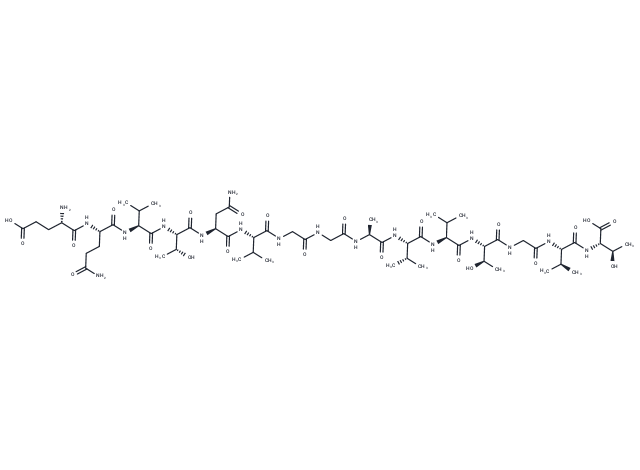Shopping Cart
- Remove All
 Your shopping cart is currently empty
Your shopping cart is currently empty

α-Synuclein (61-75) is a peptide fragment derived from the larger protein α-Synuclein, which is predominantly found in presynaptic nerve terminals and considered a biomarker candidate for Parkinson's disease (PD).

| Pack Size | Price | Availability | Quantity |
|---|---|---|---|
| 100 mg | Inquiry | Backorder | |
| 500 mg | Inquiry | Backorder |
| Description | α-Synuclein (61-75) is a peptide fragment derived from the larger protein α-Synuclein, which is predominantly found in presynaptic nerve terminals and considered a biomarker candidate for Parkinson's disease (PD). |
| In vitro | Lewy bodies containing α-Synuclein are key neuropathological indicators of Parkinson's Disease (PD). Mutations in α-Synuclein (A30P, E46K, H50Q, G51D, A53E, A53T), along with gene duplications and triplications, directly cause PD. Polymorphisms in α-Synuclein gene regulatory elements also increase susceptibility to PD and are linked to early onset. The non-Aβ-amyloid component (NAC) of α-Synuclein is hydrophobic and prone to aggregation, unlike its counterparts in mice and human β-Synuclein, which do not aggregate. β-Synuclein shares greater homology with α-Synuclein in the N-terminal sequences (74%) compared to γ-Synuclein (67%)[1]. |
| Molecular Weight | 1430.58 |
| Formula | C60H103N17O23 |
| Cas No. | 440645-08-9 |
| Relative Density. | 1.304 g/cm3 (Predicted) |
| Storage | keep away from moisture | Powder: -20°C for 3 years | In solvent: -80°C for 1 year | Shipping with blue ice. |

Copyright © 2015-2025 TargetMol Chemicals Inc. All Rights Reserved.